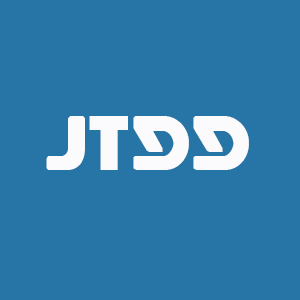REFERENCES
1. Ferlay J, Ervik M, Lam FM, et al. Global and Regional Estimates of the Incidence and Mortality for 38 Cancers: GLOBOCAN 2018. Available from: https://gco.iarc.fr/today [Last accessed on 28 Jan 2022].
2. Hjalgrim H, Chang E, Glaser S. Hodgkin lymphoma. In: Thun MJ, Linet MS, Cerhan JR, Haiman CA, Schottenfeld D, editors. Cancer epidemiology and prevention. New York: Oxford University Press; 2018. p. 745-66.
3. Shanbhag S, Ambinder RF. Hodgkin lymphoma: a review and update on recent progress. CA Cancer J Clin 2018;68:116-32.
4. Biccler JL, Glimelius I, Eloranta S, et al. Relapse risk and loss of lifetime after modern combined modality treatment of young patients with Hodgkin lymphoma: a Nordic lymphoma epidemiology group study. J Clin Oncol 2019;37:703-13.
5. Caro J, Diefenbach C. New approaches to managing relapsed/refractory Hodgkin lymphoma: the role of checkpoint inhibitors and beyond. Expert Rev Hematol 2021;14:741-50.
6. Glimelius I, Diepstra A. Novel treatment concepts in Hodgkin lymphoma. J Intern Med 2017;281:247-60.
7. Glimelius I, Ekberg S, Jerkeman M, et al. Long-term survival in young and middle-aged Hodgkin lymphoma patients in Sweden 1992-2009-trends in cure proportions by clinical characteristics. Am J Hematol 2015;90:1128-34.
8. Ng AK, van Leeuwen FE. Hodgkin lymphoma: late effects of treatment and guidelines for surveillance. Semin Hematol 2016;53:209-15.
9. Björkholm M, Weibull CE, Eloranta S, Smedby KE, Glimelius I, Dickman PW. Greater attention should be paid to developing therapies for elderly patients with Hodgkin lymphoma-A population-based study from Sweden. Eur J Haematol 2018;101:106-14.
10. Glimelius I, Eloranta S, Ekberg S, Chang ET, Neovius M, Smedby KE. Increased healthcare use up to 10 years among relapse-free Hodgkin lymphoma survivors in the era of intensified chemotherapy and limited radiotherapy. Am J Hematol 2017;92:251-8.
11. Glimelius I, Englund A, Rostgaard K, et al. Distribution of hospital care among pediatric and young adult Hodgkin lymphoma survivors-A population-based cohort study from Sweden and Denmark. Cancer Med 2019;8:4918-27.
12. Carbone A, Gloghini A, Carlo-Stella C. Are EBV-related and EBV-unrelated Hodgkin lymphomas different with regard to susceptibility to checkpoint blockade? Blood 2018;132:17-22.
13. Swerdlow SH, Campo E, Pileri SA, et al. The 2016 revision of the World Health Organization classification of lymphoid neoplasms. Blood 2016;127:2375-90.
14. Stein H, Delsol G, Pileri SA, Weiss LM, Poppema S, Jaffe ES. Classical Hodgkin lymphoma, introduction, In: Swerdlow SH, Campo E, Harris NL, Jaffe ES, Pileri SA, Stein H, Thiele J, Vardiman JW, editors. WHO classification of tumours of haematopoietic and lymphoid tissues. Lyon, France: International Agency for Research on Cancer; 2008. p. 326-9.
16. Cozen W, Kavianpour B, Mack TM. The epidemiology of Hodgkin lymphoma. In: Hudnall S, Küppers R, editors. Precision molecular pathology of Hodgkin lymphoma. Springer International Publishing; 2017. p. 157-96.
17. Hjalgrim H, Seow A, Rostgaard K, Friborg J. Changing patterns of Hodgkin lymphoma incidence in Singapore. Int J Cancer 2008;123:716-9.
18. Macmahons B. Epidemiological evidence on the nature of Hodgkin’s disease. Cancer 1957;10:1045-54.
20. Cozen W, Katz J, Mack TM. Risk patterns of Hodgkin’s disease in Los Angeles vary by cell type. Cancer Epidemiol Biomarkers Prev 1992;1:261-8.
21. Glaser SL, Lin RJ, Stewart SL, et al. Epstein-Barr virus-associated Hodgkin’s disease: epidemiologic characteristics in international data. Int J Cancer 1997;70:375-82.
22. Gutensohn N, Cole P. Epidemiology of Hodgkin’s disease in the young. Int J Cancer 1977;19:595-604.
25. Epstein M, Achong B, Barr Y. Virus particles in cultured lymphoblasts from Burkitt’s lymphoma. Lancet 1964;283:702-3.
26. Rostgaard K, Balfour HH Jr, Jarrett R, et al. Primary Epstein-Barr virus infection with and without infectious mononucleosis. PLoS One 2019;14:e0226436.
27. Thorley-Lawson DA. Epstein-Barr virus: exploiting the immune system. Nat Rev Immunol 2001;1:75-82.
28. Poppema S, van Imhoff G, Torensma R, Smit J. Lymphadenopathy morphologically consistent with Hodgkin’s disease associated with Epstein-Barr virus infection. Am J Clin Pathol 1985;84:385-90.
29. Weiss LM, Strickler JG, Warnke RA, Sklar J. Epstein-Barr viral DNA in tissues of Hodgkin’s disease. Am J Pathology 1987;129:86-91.
30. Anagnostopoulos I, Herbst H, Niedobitek G, Stein H. Demonstration of monoclonal EBV genomes in Hodgkin’s disease and Ki-1-positive anaplastic large cell lymphoma by combined Southern blot and in situ hybridization. Blood 1989;74:810-6.
31. Weiss LM, Movahed LA, Warnke RA, Sklar J. Detection of Epstein-Barr viral genomes in Reed-Sternberg cells of Hodgkin’s disease. N Engl J Med 1989;320:502-6.
32. Lee JH, Kim Y, Choi JW, Kim YS. Prevalence and prognostic significance of Epstein-Barr virus infection in classical Hodgkin’s lymphoma: a meta-analysis. Arch Med Res 2014;45:417-31.
33. Levin LI, Chang ET, Ambinder RF, et al. Atypical prediagnosis Epstein-Barr virus serology restricted to EBV-positive Hodgkin lymphoma. Blood 2012;120:3750-5.
34. Diepstra A, Niens M, Vellenga E, et al. Association with HLA class I in Epstein-Barr-virus-positive and with HLA class III in Epstein-Barr-virus-negative Hodgkin’s lymphoma. Lancet 2005;365:2216-24.
35. Enciso-Mora V, Broderick P, Ma Y, et al. A genome-wide association study of Hodgkin’s lymphoma identifies new susceptibility loci at 2p16.1 (REL), 8q24.21 and 10p14 (GATA3). Nat Genet 2010;42:1126-30.
36. Urayama KY, Jarrett RF, Hjalgrim H, et al. Genome-wide association study of classical Hodgkin lymphoma and Epstein-Barr virus status-defined subgroups. J Natl Cancer Inst 2012;104:240-53.
37. Cozen W, Timofeeva MN, Li D, et al. A meta-analysis of Hodgkin lymphoma reveals 19p13.3 TCF3 as a novel susceptibility locus. Nat Commun 2014;5:3856.
38. Delahaye-Sourdeix M, Urayama KY, Gaborieau V, et al. A novel risk locus at 6p21.3 for Epstein-Barr virus-positive Hodgkin lymphoma. Cancer Epidemiol Biomarkers Prev 2015;24:1838-43.
39. Khankhanian P, Cozen W, Himmelstein DS, et al. Meta-analysis of genome-wide association studies reveals genetic overlap between Hodgkin lymphoma and multiple sclerosis. Int J Epidemiol 2016;45:728-40.
41. Desai S, Ansell SM. Future directions in Hodgkin lymphoma: checkpoint inhibitors and beyond. Leuk Lymphoma 2021;62:1795-804.
42. Cheson BD, Fisher RI, Barrington SF, et al. Alliance, Australasian Leukaemia and Lymphoma Group, Eastern Cooperative Oncology Group, European Mantle Cell Lymphoma Consortium, Italian Lymphoma Foundation, European Organisation for Research, Treatment of Cancer/Dutch Hemato-Oncology Group, Grupo Español de Médula Ósea, German High-Grade Lymphoma Study Group, German Hodgkin’s Study Group, Japanese Lymphorra Study Group, Lymphoma Study Association, NCIC Clinical Trials Group, Nordic Lymphoma Study Group, Nordic Lymphoma Study Group, United Kingdom National Cancer Research Institute. Recommendations for initial evaluation, staging, and response assessment of Hodgkin and non-Hodgkin lymphoma: the Lugano classification. J Clin Oncol 2014;32:3059-68.
43. Ansell SM. Hodgkin lymphoma: 2016 update on diagnosis, risk-stratification, and management. Am J Hematol 2016;91:434-42.
44. Bröckelmann PJ, Specht L. Prognostic Factors. In: Engert A, Younes A, editors. Hodgkin lymphoma - a comprehensive review. Cham, Switzerland: Springer Nature Switzerland AG; 2020. p. 145-70.
45. Allemani C, Sant M, De Angelis R, Marcos-Gragera R, Coebergh JW. EUROCARE Working Group. Hodgkin disease survival in Europe and the U.S.: prognostic significance of morphologic groups. Cancer 2006;107:352-60.
46. Keegan TH, Glaser SL, Clarke CA, et al. Epstein-Barr virus as a marker of survival after Hodgkin’s lymphoma: a population-based study. J Clin Oncol 2005;23:7604-13.
47. Jarrett RF, Stark GL, White J, et al. Scotland and Newcastle Epidemiology of Hodgkin Disease Study Group. Impact of tumor Epstein-Barr virus status on presenting features and outcome in age-defined subgroups of patients with classic Hodgkin lymphoma: a population-based study. Blood 2005;106:2444-51.
48. Diepstra A, van Imhoff GW, Schaapveld M, et al. Latent Epstein-Barr virus infection of tumor cells in classical Hodgkin’s lymphoma predicts adverse outcome in older adult patients. J Clin Oncol 2009;27:3815-21.
49. Küppers R, Rajewsky K, Zhao M, et al. Hodgkin disease: Hodgkin and Reed-Sternberg cells picked from histological sections show clonal immunoglobulin gene rearrangements and appear to be derived from B cells at various stages of development. Proc Natl Acad Sci U S A 1994;91:10962-6.
50. Kanzler H, Küppers R, Hansmann ML, Rajewsky K. Hodgkin and Reed-Sternberg cells in Hodgkin’s disease represent the outgrowth of a dominant tumor clone derived from (crippled) germinal center B cells. J Exp Med 1996;184:1495-505.
51. Marafioti T, Hummel M, Foss HD, et al. Hodgkin and reed-sternberg cells represent an expansion of a single clone originating from a germinal center B-cell with functional immunoglobulin gene rearrangements but defective immunoglobulin transcription. Blood 2000;95:1443-50.
52. Mancao C, Altmann M, Jungnickel B, Hammerschmidt W. Rescue of “crippled” germinal center B cells from apoptosis by Epstein-Barr virus. Blood 2005;106:4339-44.
53. Jarrett RF, Hjalgrim H, Murray PG. The role of viruses in the genesis of Hodgkin lymphoma. In: Engert A, Younes A, editors. Hodgkin lymphoma - a comprehensive review. Cham: Springer; 2018. p. 25-46.
54. Rosenwald A, Küppers R. Pathology and molecular pathology of Hodgkin lymphoma. In: Engert A, Younes A, editors. Hodgkin lymphoma - a comprehensive overview, Cham: Springer; 2020. p. 47-68.
55. Murray PG, Young LS. An etiological role for the Epstein-Barr virus in the pathogenesis of classical Hodgkin lymphoma. Blood 2019;134:591-6.
56. Murray P, Ibrahim M. Role of EBV in classical Hodgkin lymphoma. In: Hudnall SD, Küppers R, editors. Precision molecular pathology of Hodgkin lymphoma. Cham: Springer; 2018. p. 91-110.
58. Visser L, Veldman J, Poppema S, van den Berg A, Diepstra A. Microenvironment, cross-talk, and immune escape mechanisms. In: Engert A, Younes A, editors. Hodgkin lymphoma - a comprehensive overview. Cham: Springer; 2020. p. 69-86.
59. Chetaille B, Bertucci F, Finetti P, et al. Molecular profiling of classical Hodgkin lymphoma tissues uncovers variations in the tumor microenvironment and correlations with EBV infection and outcome. Blood 2009;113:2765-3775.
60. Ghosh SK, Perrine SP, Williams RM, Faller DV. Histone deacetylase inhibitors are potent inducers of gene expression in latent EBV and sensitize lymphoma cells to nucleoside antiviral agents. Blood 2012;119:1008-17.
61. Porcu P, Haverkos B, Alpdogan O, et al. Oral nanatinostat (Nstat) and valganciclovir (VGCV) in patients with recurrent Epstein-Barr virus (EBV)-positive lymphomas: initial phase 2 results. Blood 2020;136:7-8.
62. Perrine SP, Hermine O, Small T, et al. A phase 1/2 trial of arginine butyrate and ganciclovir in patients with Epstein-Barr virus-associated lymphoid malignancies. Blood 2007;109:2571-8.
63. Nijland M, Veenstra RN, Visser L, et al. HLA dependent immune escape mechanisms in B-cell lymphomas: implications for immune checkpoint inhibitor therapy? Oncoimmunology 2017;6:e1295202.
64. Bollard CM, Gottschalk S, Torrano V, et al. Sustained complete responses in patients with lymphoma receiving autologous cytotoxic T lymphocytes targeting Epstein-Barr virus latent membrane proteins. J Clin Oncol 2014;32:798-808.
65. Ho C, Ruella M, Levine BL, Svoboda J. Adoptive T-cell therapy for Hodgkin lymphoma. Blood Adv 2021;5:4291-302.
66. Bollard CM, Tripic T, Cruz CR, et al. Tumor-specific T-cells engineered to overcome tumor immune evasion induce clinical responses in patients with relapsed hodgkin lymphoma. J Clin Oncol 2018;36:1128-39.
67. Heslop HE, Sharma S, Rooney CM. Adoptive T-cell therapy for Epstein-Barr virus-related lymphomas. J Clin Oncol 2021;39:514-24.
68. Rouce RH, Mehta B, Sharma S, et al. Rapidly-generated EBV-specific T cells (EBVST-cells) to treat type 2 latency lymphoma. Blood 2016;128:2990.
69. Curran KJ, Sauter CS, Kernan NA, et al. Durable remission following “off-the-shelf” chimeric antigen receptor (CAR) T-cells in patients with relapse/refractory (R/R) B-cell malignancies. Biol Blood Marrow Tr 2020;26:S89.
70. Dalton T, Doubrovina E, Pankov D, et al. Epigenetic reprogramming sensitizes immunologically silent EBV+ lymphomas to virus-directed immunotherapy. Blood 2020;135:1870-81.
71. Choi IK, Wang Z, Ke Q, et al. Mechanism of EBV inducing anti-tumour immunity and its therapeutic use. Nature 2021;590:157-62.
72. Mottok A, Steidl C. Biology of classical Hodgkin lymphoma: implications for prognosis and novel therapies. Blood 2018;131:1654-65.
73. Kamper P, Bendix K, Hamilton-Dutoit S, Honoré B, Nyengaard JR, d’Amore F. Tumor-infiltrating macrophages correlate with adverse prognosis and Epstein-Barr virus status in classical Hodgkin’s lymphoma. Haematologica 2011;96:269-76.
74. Guo B, Cen H, Tan X, Ke Q. Meta-analysis of the prognostic and clinical value of tumor-associated macrophages in adult classical Hodgkin lymphoma. BMC Med 2016;14:159.
75. Vari F, Arpon D, Keane C, et al. Immune evasion via PD-1/PD-L1 on NK cells and monocyte/macrophages is more prominent in Hodgkin lymphoma than DLBCL. Blood 2018;131:1809-19.
76. Advani RH, Moskowitz AJ, Bartlett NL, et al. Brentuximab vedotin in combination with nivolumab in relapsed or refractory Hodgkin lymphoma: 3-year study results. Blood 2021;138:427-38.
77. Reinke S, Bröckelmann PJ, Iaccarino I, et al. Tumor and microenvironment response but no cytotoxic T-cell activation in classic Hodgkin lymphoma treated with anti-PD1. Blood 2020;136:2851-63.
78. Cader FZ, Hu X, Goh WL, et al. A peripheral immune signature of responsiveness to PD-1 blockade in patients with classical Hodgkin lymphoma. Nat Med 2020;26:1468-79.
79. Veldman J, Visser L, Berg AVD, Diepstra A. Primary and acquired resistance mechanisms to immune checkpoint inhibition in Hodgkin lymphoma. Cancer Treat Rev 2020;82:101931.
80. Diepstra A, Poppema S, Boot M, et al. HLA-G protein expression as a potential immune escape mechanism in classical Hodgkin’s lymphoma. Tissue Antigens 2008;71:219-26.
81. Bartlett NL, Herrera AF, Domingo-Domenech E, et al. A phase 1b study of AFM13 in combination with pembrolizumab in patients with relapsed or refractory Hodgkin lymphoma. Blood 2020;136:2401-9.
82. Csizmar CM, Ansell SM. Engaging the innate and adaptive antitumor immune response in lymphoma. Int J Mol Sci 2021;22:3302.









